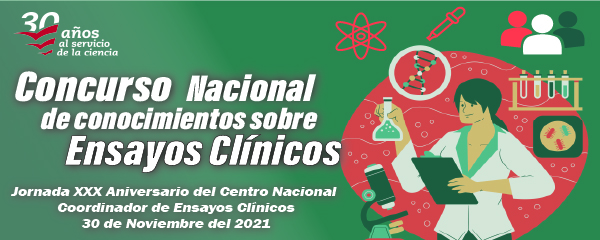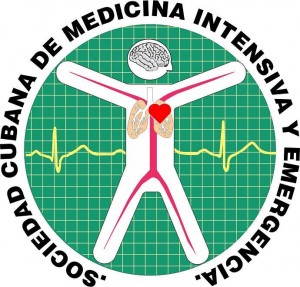1001 pacientes maternas gravemente enfermas en una unidad de cuidados intensivos polivalente / 1001 critically ill maternal patients in a general intensive care unit
Resumen
Introducción: Las unidades de cuidados intensivos participan en la atención a la materna grave.
Objetivo: Conocer los resultados de trabajo con la materna gravemente enferma del equipo multidisciplinario en la unidad de cuidados intensivos.
Método: Estudio de tipo longitudinal, retrospectivo y observacional de 1001 pacientes maternas graves ingresadas en dos unidades de cuidados intensivos polivalentes desde enero 1987 hasta diciembre 31, 2014.
Resultados: Ingresaron un total de 1001 maternas graves y fallecieron 62 (6,1%) que representaron el 61,3 % de las maternas fallecidas en la provincia y el 4,0 % del país. Las entidades más frecuentes fueron: sepsis, enfermedad hipertensiva del embarazo, síndrome de choque, trastornos hemorrágicos y síndrome de distrés respiratorio agudo.
Conclusiones: La unidad de cuidados intensivos polivalente complementó el trabajo del nivel primario de salud y de los hospitales maternos, lo cual decidió parte importante en la reducción de la mortalidad materna en la provincia y debe desempeñar un papel substancial en la atención a la materna grave.
Abstract. Introduction: Introduction: The intensive care units participate in the attention to the maternal patient seriously ill.
Objective: To know the work results with the maternal gravely sick of the multidisciplinary team in the intensive care unit.
Method: Longitudinal retrospective and observational trial of 1001 maternal patients who were admitted in two general intensive care units from January 1987 to December 31 of 2014.
Results: 1001 critically ill maternal patients were admitted and 62 of them died which represented 61,3% of the maternal death in the province and 4,0% in the country. The most frequent entities were: sepsis, hypertensive disorders, shock syndrome, bleedings disorders and acute respiratory distress syndrome. Conclusions: TConclusions: general intensive care unit complemented the primary level of health work and the maternal hospitals, which decided an important part in the reduction of maternal mortality in the province and should develop a substantial part in the critically ill maternal patient attention.
Palabras clave
Referencias
Germain S, Wyncoll D, Nelson-Piercy C. Management of the critically ill obstetric patient. Current Obstetrics-Gynecology 2006;16:125-33.
World Health Organization. Maternal mortality (Updated Mayo 2014). WHO Fact sheet N° 348 [Internet] 2010 [citado 12 Agosto 2015]; [aprox. 1 p.]. Disponible en: http://www.who.int/mediacentre/factsheets/fs348
World Health Organization. International statistical classification of diseases related health problems, tenth revision (ICD – 10). 2nd edition. Geneva, Switzerland. 2004.
Romero M, Ramos S, Ábalos E. Modelos de análisis de la morbimortalidad materna. Hoja informativa 3 OSS y R [Internet] 2010. Disponible en:
http://www.ossyr.org.ar/hojas_informativas.html
Sánchez Padrón AJ, Sánchez Valdivia AJ, Somoza García ME, Pérez Sánchez L. La sepsis grave en la paciente obstétrica. 1ra Ed. Wuppertal (Alemania): Flying Publisher; 2012.
Briones Garduño JC. Protocolo de manejo de preeclampsia-eclampsia, estudio comparativo. RMIMSS 1999;67 (1):8-16.
Afessa B, Green B, Delke I, Koch K. Systemic Inflammatory Response Syndrome, Organ Failure, and its Outcome in Critically Ill Obstetric Patients Treated in an ICU. Chest 2001;120 (4):1271–7.
Male DA, Stockwell M, Jankowski S. Management of the critically ill obstetric patient. Current Obstetric-Gynecology 2002;12:322-7.
Karnad DR, Guntupalli KK. Critical illness and pregnancy: review of a global problem. Crit Care Clin 2004;20: 556-76.
World Health Organization. Maternal mortality in 2000: Estimates Developed by WHO, UNICEF and UNFPA. Geneva (Switzerland): WHO; 2003.
Sánchez Padrón AJ, Sánchez Valdivia AJ, Somoza García ME, Pérez Assef A, Rodríguez Santana E. Evaluación de una guía de práctica clínica para la paciente obstétrica gravemente enferma por sepsis. Rev Cub Med Int Emerg 2014;13 (3):225-39.
Maupin RT. Obstetrics Infectious Disease Emergencies. Clinical Obstetrics and Gynecology 2002;45 (2):393–04.
Powrie O Raymond. Chapter 98 Cardiac Disease and Hypertensive Disorders in Pregnancy. En: Gabrielli, Andrea; Layon, A. Joseph; Yu, Mihae. Civetta, Taylor, & Kirby's: Critical Care. 4th Edition. Philadelphia: Lippincott Williams & Wilkins; 2009.p.1442-62. 14. Hankins GDV, Barth WH, Statin AJ. Chapter 8 Critical Care Medicine and the Obstetric Patient. En: Shoemaker WC, Ayres SM, Grenvik A, Holbrook PR. Text book of Critical Care. Third Edition. Philadelphia: W.B. Saunders Company; 2000.p.50-64.
Micali AL, Marín DE, Gutiérrez LA, Silva R, Tenias P, Bravo A. Factores predisponentes de eclampsia en la población de Paraguaná 1993-1997. Rev Hospital Cardón 2000;2: 2-8.
The Magpie Trial Collaborative Group. Do women with preeclampsia and their babies benefit from magnesium sulphate? The Magpie Trial: a randomised placebo-controlled trial. Lancet 2002;359: 1877-90. Disponible en: www.thelancet.com
Smith JL, Thomas F, Orme Jr JF, Clemmer TP. Adult respiratory distress syndrome during pregnancy and immediately postpartum. West J Med 1990;153 (5):508-10.
Mabie WC, Barton JR, Sibai BM. Adult respiratory distress syndrome in pregnancy. Am J Obstet Gynecol 1992;167 (4):950-57.
Catanzarite V, Willms D, Wong D, Landers C, Cousins L, Schrimmer D. Acute respiratory distress syndrome in pregnancy and the puerperium: causes, courses, and outcomes. Obstet Gynecol 2001;97 (5):760-4.
Sánchez Valdivia AJ, Sánchez Padrón AJ. Distrés respiratorio agudo en el embarazo. Rev Cubana Obstet Ginecol 2006;32 (1).
Enlaces refback
- No hay ningún enlace refback.
Copyright (c)





 Sociedad Cubana de Medicina Intensiva y Emergencias (SOCUMIE
Sociedad Cubana de Medicina Intensiva y Emergencias (SOCUMIE  La revista está: Certificada por el CITMA
La revista está: Certificada por el CITMA La revista es de acceso abierto y gratuito.
La revista es de acceso abierto y gratuito.